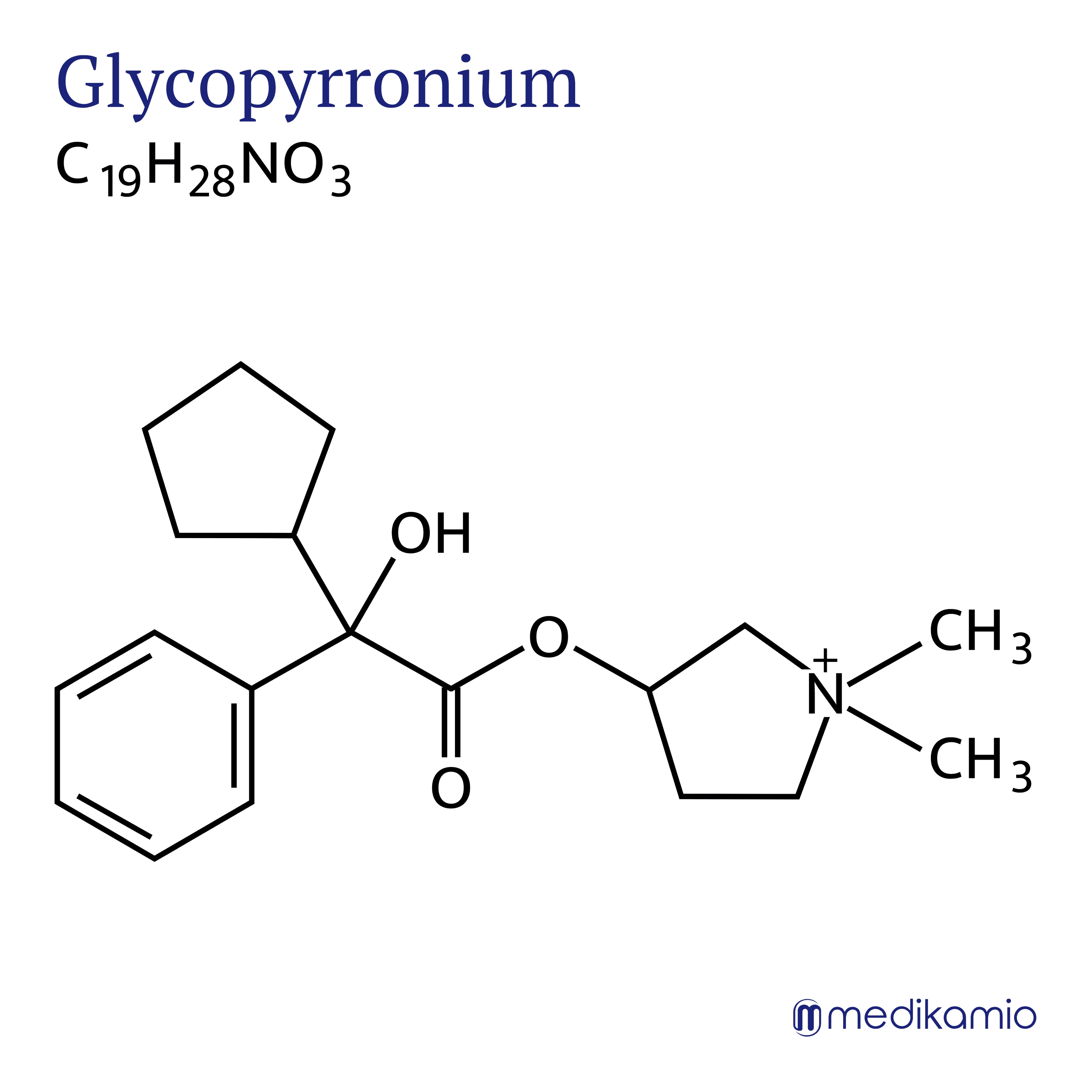Glycopyrronium binds to the muscarinic receptors as a competitive antagonist. It thus blocks the receptors to which acetylcholine, a messenger substance (neurotransmitter), otherwise binds. This prevents or at least weakens the effect of acetylcholine. Glycopyrronium is therefore an antagonist of acetylcholine and weakens its effect. The muscarinic receptors of type M1 and M3 experience the strongest attenuation, which cause a constriction of the bronchi and a reduction in sweating. The muscle tension of the bronchi is released and they widen, allowing more air to flow through. The strong sweat-reducing effect was originally regarded as a side effect, but has been approved as an active ingredient for external (topical) use, i.e. as an ointment, cream, gel, etc., since 2022. As the muscarinic receptors M1 and M3 are also present in the cardiovascular system, side effects are more likely to occur there. The advantages of glycopyrronium are that it acts very quickly and for a very long time.
Glycopyrronium is broken down by the liver (mainly via CYP2D6) and 85% is excreted via the kidneys. The plasma half-life, i.e. the time it takes the body to excrete half of the active ingredient, is around 55 minutes. It is 38-44% bound to plasma proteins.


